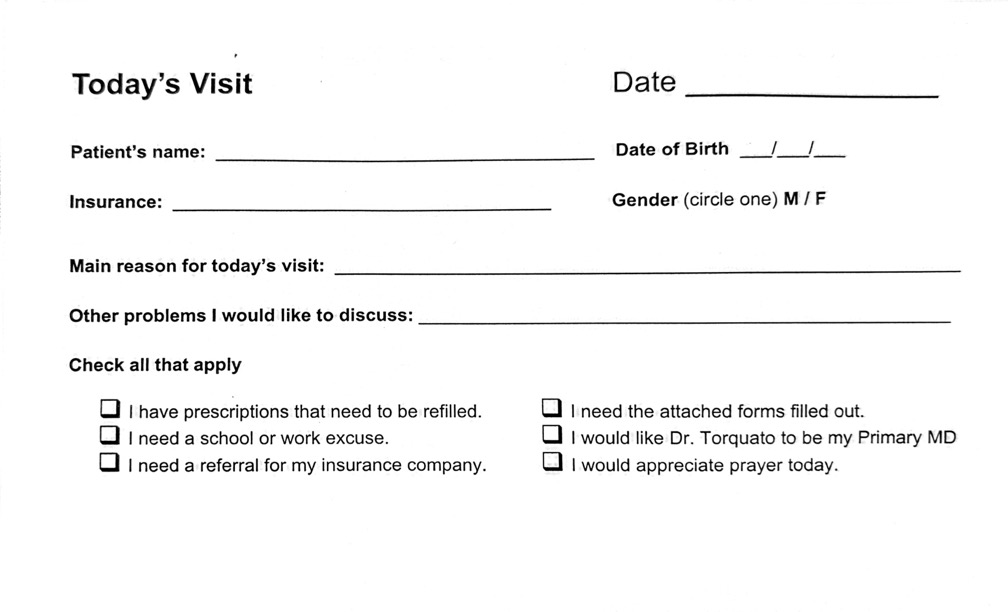A Simple, Winsome Approach
For many, praying with others—especially in a clinical setting—can feel uncomfortable or even intimidating. Some clinicians may struggle with how to offer prayer, uncertain if it is appropriate in a medical context or fearful of rejection. Others may worry that patients will perceive the offer as an agenda beyond their healthcare needs. These concerns are valid, and it is important to approach prayer in a way that is respectful, non-coercive, and sensitive to each patient’s comfort level.
Yet, as Christian physicians and healthcare providers, we have a unique opportunity to offer comfort, encouragement, and spiritual support to our patients. Prayer can provide peace in the midst of trials, invite divine intervention for healing, and encourage trust in God’s providence. Research shows that many Americans embrace prayer—according to a 2022 Gallup poll, 75% of Americans report praying often or sometimes. With such a significant percentage of the population engaged in prayer, there is a reasonable likelihood that our patients may be open to it as well.
A Simple Tool for Offering Prayer
The best way to know if a patient desires prayer is simply to ask—but how do we ask in a way that is gentle, winsome, and non-pressured? One effective approach is to provide patients with an easy way to express their preference without direct verbal inquiry. This can be done by including a question on the intake form in the medical office, allowing patients to indicate whether they would like to receive prayer during their visit.
By providing this option on paper, the patient is given the freedom to respond without feeling pressured. If a patient checks the box requesting prayer, it becomes a clear and voluntary signal—a ‘faith flag’—that allows the clinician to proceed with confidence. About 15% of patients in our practice request prayer using this method, providing a natural and seamless way to integrate faith into medical care.
How to Follow Up on a Prayer Request
Even after seeing the checked box, it is important to continue allowing the patient to make the choice. At the end of the visit, I review their intake form to ensure all concerns have been addressed. When I come to the section where they indicated a desire for prayer, I simply acknowledge their request:
“I noticed that you indicated you would like prayer today. Would you like me to pray with you now, or would you prefer that I pray for you after you leave?”
This approach provides the patient with an easy exit if, for any reason, they feel uncomfortable in the moment. While a few prefer that I pray for them after they leave, the vast majority are open to praying right then and there.
The Impact of This Simple Approach
Praying with 15% of my patients is a significant step forward compared to not praying with any patients before implementing this tool. It is non-invasive, easy to administer, and respects patient autonomy. This simple method allows us to integrate faith into our clinical work in a way that is both meaningful and professional.
As healthcare providers committed to the healing ministry of Christ, we have the privilege of offering not only medical care but also spiritual support. By providing patients with a passive, low-pressure opportunity to request prayer, we open a door for them to experience God’s peace, strength, and presence during their medical journey.
Would you consider implementing this tool in your own practice? A copy of the intake form question can be provided for those interested in using this approach.
References:
- Pew Research Center. (2018). When Americans Say They Believe in God, What Do They Mean? Retrieved from pewresearch.org
- Gallup News. (2022). Belief in God in U.S. Dips to 81%, a New Low. Retrieved from news.gallup.com
- Gallup News. (2024). Church Attendance Has Declined in Most U.S. Religious Groups. Retrieved from news.gallup.com
- Deseret News. (2023). A new survey explores how and where Americans seek divine connection — and who they pray for. Retrieved from deseret.com
The author invites you to comment on this article. Whether you agree or have a different perspective, please enter your comments in the space below.


Leave a Reply